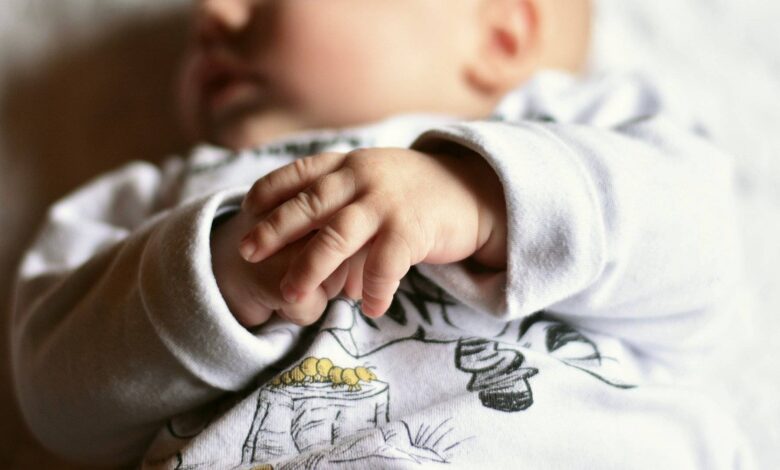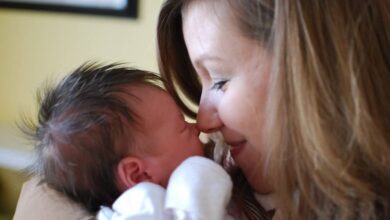Midwife and Life – How to Identify Cerebral Palsy in Babies

Giving IS CARE!
Cerebral palsy is a neurological disorder that affects a child’s movement, muscle tone and posture. It is caused by brain damage that occurs before or during birth or in the first few weeks after birth.
If your child develops cerebral palsy, it can have potentially long-term effects on their health and well-being, often leading to lifelong disability. Because of this, it’s important to make sure cerebral palsy is diagnosed as soon as possible, to ensure your child receives the treatment they need.
Recognizing the early signs of cerebral palsy can be difficult, especially for first-time parents. However, awareness of key symptoms can lead to early diagnosis, giving you and your child the best chance of effectively managing the condition and improving their overall quality of life.
Understanding cerebral palsy
Cerebral palsy is a group of disorders that affect a person’s ability to move and maintain balance and posture. It is the most common motor disability in childhood, with around 2-2.5 in every 1,000 babies diagnosed with some form of cerebral palsy – meaning 30,000 children are living with cerebral palsy in the UK.
Cerebral palsy mainly affects body movement and muscle coordination. However, it can also include cognitive impairments, sensory disturbances, perceptual issues, communication problems and behavioral difficulties. The severity of these symptoms varies widely from person to person.
The damage that leads to cerebral palsy can result from several factors, or a combination of factors that interfere with normal brain development. This may include:
- Bleeding in the baby’s brain, or lack of blood and oxygen supply to the brain
- Infections affecting the mother or baby
- Mismanagement of neonatal jaundice
- A severe head injury sustained during childhood
- Failure to treat low blood sugar (hypoglycaemia) shortly after birth
The long-term effects of cerebral palsy can vary greatly depending on the individual and the severity of their condition, and can significantly affect quality of life. People with cerebral palsy may face challenges such as difficulty walking or standing, problems communicating and feeding themselves, and learning difficulties.
Because of this, early intervention and ongoing therapy are essential to ensure that children with cerebral palsy achieve the best possible outcome.
Detecting signs of cerebral palsy
Signs of cerebral palsy are usually noticed in the first few years of a child’s life. Parents should be aware of the following early indicators:
- Motor delays – babies with cerebral palsy often show signs of motor delays, such as not rolling over by six months, or not starting to crawl by nine to 10 months. They may also have difficulty with motor skills, such as holding toys.
- Abnormal muscle tone – babies with cerebral palsy may have muscle tone that is too stiff or too floppy. They may overextend their back and neck, and their body may feel stiff or floppy when picked up.
- Poor coordination and control – babies with cerebral palsy may move in unusual ways or favor one side of their body. They may crawl sideways, dragging one hand or leg behind them.
- Difficulty feeding – this includes difficulty sucking, swallowing and eating, which can lead to poor growth or malnutrition.
- Developmental delays – babies with cerebral palsy may take longer to reach developmental milestones such as sitting up, smiling, talking and walking.
The symptoms of cerebral palsy can be different depending on the child’s age, so parents should be looking for different signs as their baby grows:
For babies under six months:
- Your baby may feel too hard or too floppy when you hold them
- When you pick up your baby while he’s lying down, his head may catch or fall
- Your baby will overextend their back or neck, as if pushing away from you when held
- When you pick up your baby, their legs may stiffen and cross over each other
For babies between six and 10 months:
- Your baby does not roll in both directions when lying down
- Your baby may have difficulty putting their hands or their mouth together
- Your baby reaches out with one hand while the other remains clenched into a fist
For babies older than 10 months:
- Your baby may crawl unevenly, dragging one arm or leg behind them
- Instead of crawling on all fours, your baby may move by bouncing on his knees, or pulling himself forward with his hands while sitting.
It’s also important to note that there are several different forms of cerebral palsy, all of which have slightly different definitions and symptoms:
- Spastic cerebral palsy – the most common type, characterized by stiff and jerky movements due to muscle stiffness and joint contracture.
- Dyskinetic cerebral palsy – involves uncontrolled, slow, writhing movements, affecting the hands, arms, feet and legs. It can also affect the face and tongue, causing grimacing and drooling
- Ataxic cerebral palsy – this type affects balance and coordination, leading to problems with movements that require precision, such as writing
- Mixed cerebral palsy – this combines symptoms of several types of cerebral palsy, usually dyskinetic and spastic cerebral palsy
When to seek medical attention
If you notice any of the signs or symptoms of cerebral palsy in your baby, it’s important to seek medical attention as soon as possible. Although these symptoms do not definitively prove that your child has cerebral palsy, they warrant a thorough evaluation. Early diagnosis and intervention can help improve outcomes and effectively manage symptoms.
Once a diagnosis of cerebral palsy is confirmed, a team of health care professionals will work together to develop a treatment plan tailored to your child’s specific needs. Possible treatment options include:
- Physiotherapy to improve strength, flexibility, mobility and coordination
- Occupational therapy to help develop skills needed for daily activities such as dressing, eating and schoolwork; occupational therapists may also suggest changes to the home or school environment to make these activities easier
- Speech therapy to help with speech or swallowing difficulties
- Medicines to manage cerebral palsy symptoms, such as muscle relaxants to reduce spasticity and pain relievers to manage discomfort
- Surgery to improve mobility or reduce pain
The earlier treatment begins, the better the potential outcome for the child, which is why it’s always best to seek medical attention as soon as possible if you suspect they have cerebral palsy.
Is cerebral palsy caused by medical negligence?
Cerebral palsy is usually caused by brain damage that occurs before, during or shortly after birth. Although many cases of cerebral palsy are due to factors beyond our control, such as genetic mutations or infection during pregnancy, there are instances where cerebral palsy can be the result of medical negligence.
Medical negligence refers to a situation where a health care professional fails to provide the standard of care expected in a particular situation, and this failure results in harm to the patient. In the context of cerebral palsy, this can happen in several ways:
- Failure to monitor the health of the mother and baby throughout pregnancy
- Errors or delays in responding to complications during labor and delivery, leading to oxygen starvation of the baby or head injury
- Not diagnosing and treating conditions such as jaundice leading to kernicterus, infections or low blood sugar (neonatal hypoglycaemia) just after the baby is born, leading to brain damage and cerebral palsy
If you suspect that your child’s cerebral palsy may have been caused by medical negligence, it is important seek legal advice. A medical malpractice attorney can help you understand your rights, guide you through the claims process, and work to secure the compensation your child deserves.
Cerebral palsy will always present great challenges for affected families, but by learning about the condition and making sure you know what to do if your child is affected, you will give them the best chance of a free life
Disclosure: collaborative post
Thanks for reading – if you enjoyed this content, please consider I will buy coffee here
o browse my Amazon wishlist
I really appreciate your support and it helps to keep the site running and for my time 🙂





